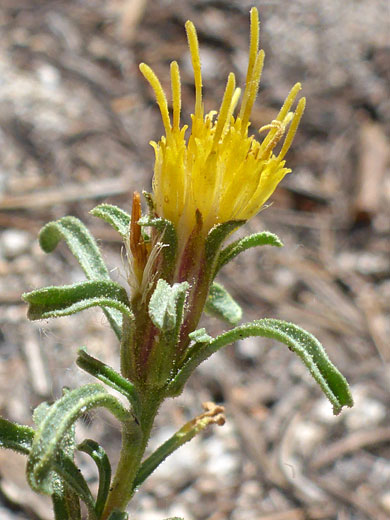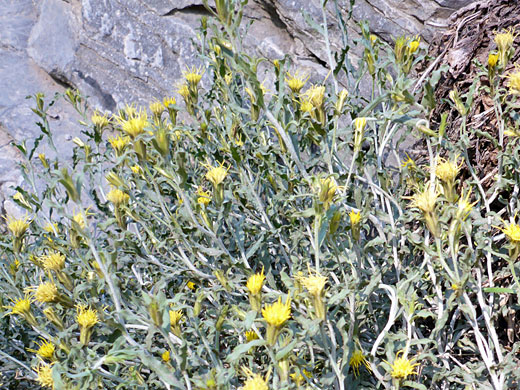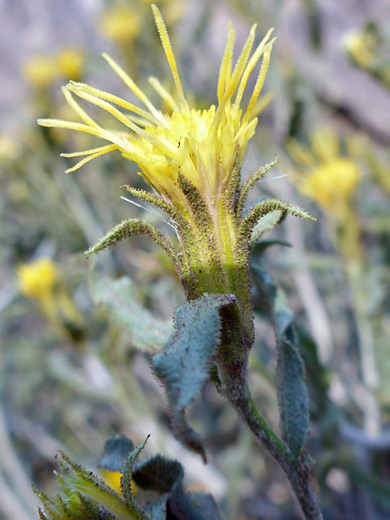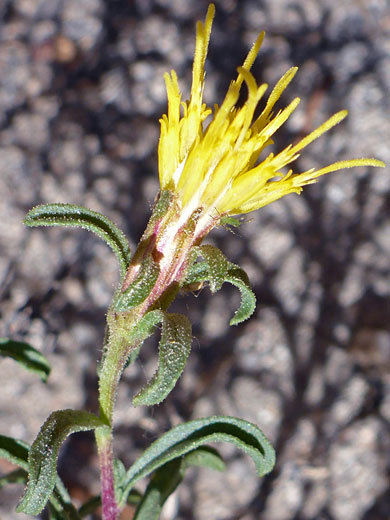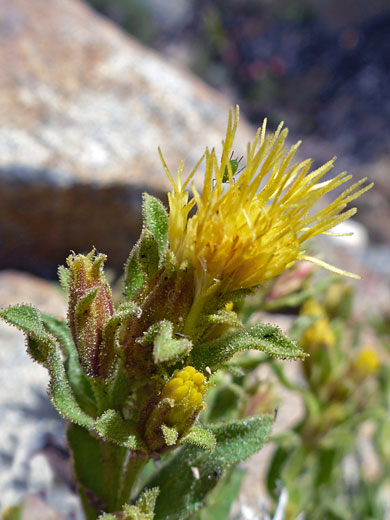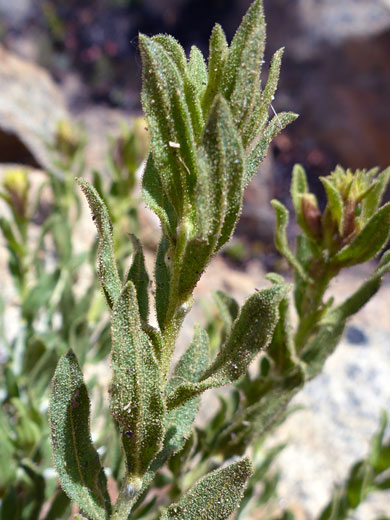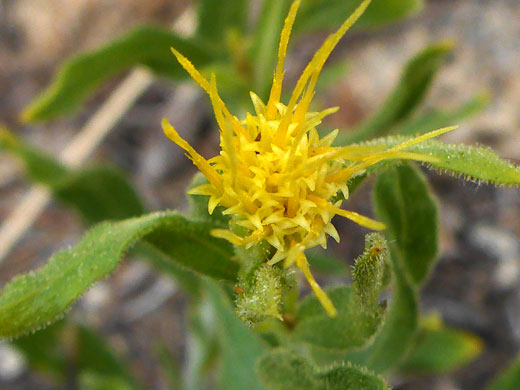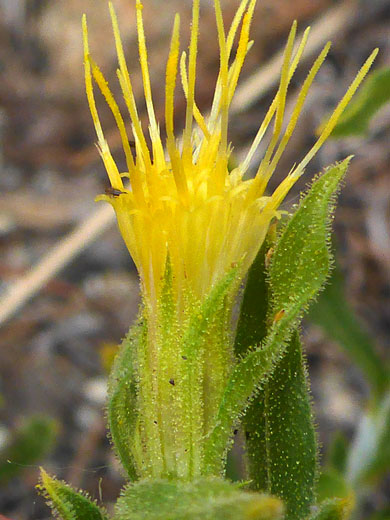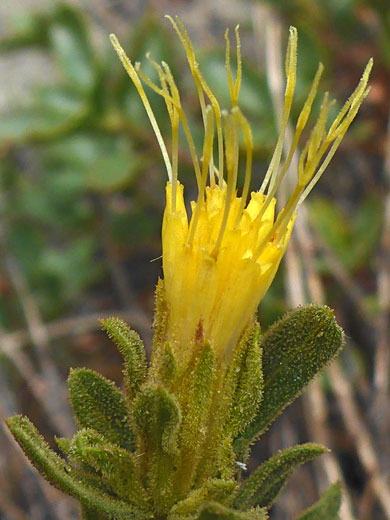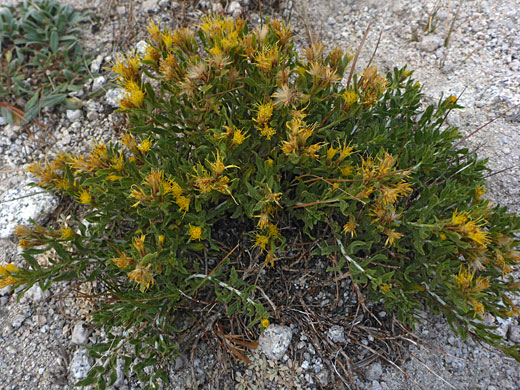Common names:
Whitestem goldenbush, sharp-scale goldenweed
Family:
Scientific name:
Ericameria discoidea
Main flower color:
Range:
The Great basin states, Colorado and some adjacent areas
Height:
Up to 15 inches
Habitat:
Rocky hillsides and open woodland; 8,200 to 12,500 feet
Leaves:
Alternate, narrowly oblanceolate to linear, up to 1.4 inches long and 0.3 inches across, with wavy margins and glandular faces
Season:
July to September
Ericameria discoidea grows in exposed, rocky places in mountainous regions, forming low clumps containing dozens of upright, branched stems. Branches appear white due to a dense covering of short, felt-like, non-glandular hairs. Leaves are generally angled upwards, and often have a sparser covering of darker, stalked glands. Leaf edges are usually conspicuously wavy. Leaves have one prominent midvein, and often one or two smaller side veins, extending about half way to the tip.
Flowerheads are produced at the tip of the branches, singly or in small clusters, atop short stalks. Beneath each flowerhead are up to three leaf-like bracts, though sometimes these are absent. The involucre is enclosed by between 12 and 17 glandular, green or light brown phyllaries, in two or three rows, some spreading or slightly recurved. The yellow disc florets number between 10 and 26, and when mature the corollas are about half an inch long. There are no ray florets.
Flowerheads are produced at the tip of the branches, singly or in small clusters, atop short stalks. Beneath each flowerhead are up to three leaf-like bracts, though sometimes these are absent. The involucre is enclosed by between 12 and 17 glandular, green or light brown phyllaries, in two or three rows, some spreading or slightly recurved. The yellow disc florets number between 10 and 26, and when mature the corollas are about half an inch long. There are no ray florets.
All Contents © Copyright The American Southwest | Comments and Questions | Contribute | Site Map
